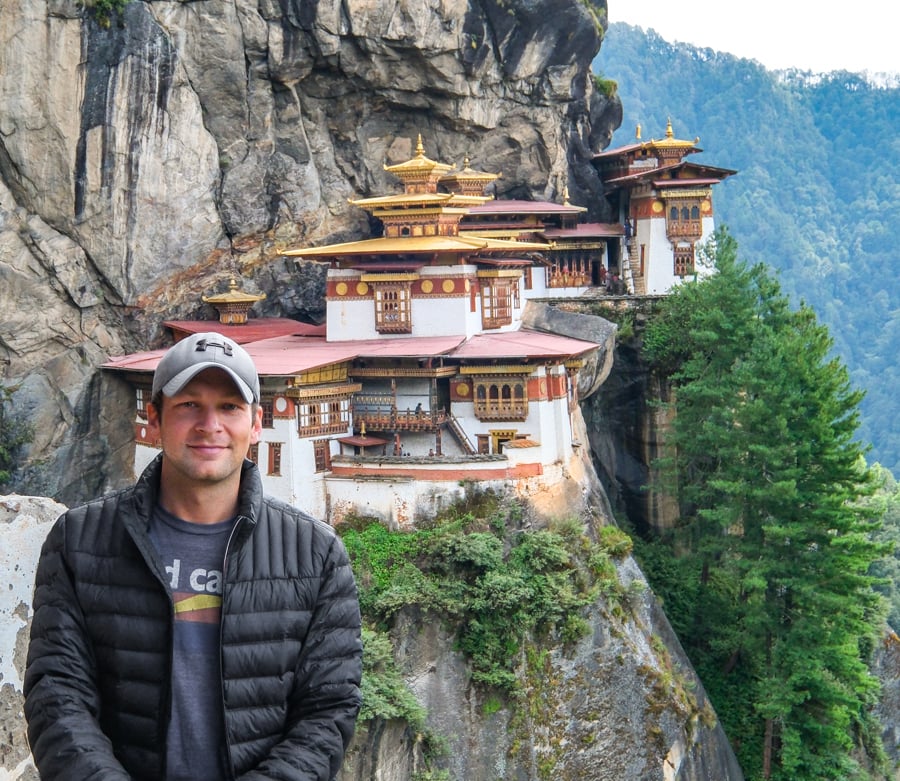Nestled high in the cliffs of the Paro Valley, the Tiger’s Nest Monastery—also known as Taktsang Palphug Monastery—is one of Bhutan’s most iconic landmarks. Perched at an elevation of 3,120 meters (10,240 feet), this stunning structure is not just a feast for the eyes; it also holds deep spiritual significance for many. Hiking to this sacred site offers more than just breathtaking views and a rush of adrenaline—it’s a journey through nature and culture that leaves an indelible mark on your soul.
Whether you’re an avid trekker or simply someone looking to experience something extraordinary, making your way to Tiger’s Nest will be one of your most memorable adventures. The trail winds through lush forests filled with fragrant rhododendrons and ancient pines, taking you closer to a heritage that dates back centuries. So lace up those hiking boots! Let’s explore everything you need to know about conquering this remarkable hike in Bhutan.
Tiger’s Nest Hike: Quick Facts
The hike to Tiger’s Nest Monastery is a thrilling experience. It spans approximately 6 kilometers (3.7 miles) each way.
Starting from the base, you’ll gain about 900 meters in elevation. This can be challenging but incredibly rewarding.
Most trekkers complete the round trip in around 4 to 6 hours, depending on your pace and how often you stop for photos or rest breaks.
The trail is well-marked and consists mostly of dirt paths and stone steps. Along the way, you’ll encounter prayer flags fluttering in the wind, adding a spiritual ambiance to your journey.
Don’t forget that altitude can affect some hikers; acclimatization may take time for those coming from lower elevations. Be sure to listen to your body as you ascend this breathtaking path toward enlightenment and serenity at one of Bhutan’s most revered sites.
How Hard Is The Hike?
The hike to Tiger’s Nest Monastery can be challenging, but it’s also incredibly rewarding. The trail consists of steep sections and rocky paths that will test your stamina.
Many hikers describe the journey as a gradual ascent, with some steeper segments that may leave you breathless. This is not an easy stroll through the park; expect to engage both your muscles and mind.
However, it’s worth noting that the path is well-marked and maintained. Along the way, you’ll find scenic viewpoints and plenty of opportunities for rest.
If you’re moderately fit, you’ll likely manage just fine with determination and pacing yourself. For those who are less experienced or have mobility issues, consider taking breaks frequently or opting for a guided tour to help navigate this breathtaking adventure more comfortably.
How Long Is The Hike?
The hike to Tiger’s Nest Monastery spans approximately 4 to 5 kilometers each way.
Most trekkers complete it in about 2 to 3 hours one way, depending on their pace and fitness level. The path winds through lush forests, offering breathtaking views that can be hard to resist.
As you ascend, don’t rush. Take breaks to soak in the scenery or chat with fellow hikers. You’ll find that every step is worth it when you catch a glimpse of the monastery perched dramatically on the cliffside.
Keep an eye out for prayer flags fluttering in the wind; they add a magical touch along the trail. As you near your destination, excitement builds—the majestic sight of Tiger’s Nest awaits!
Best Time To Visit Bhutan
The ideal time to explore Bhutan hinges on the experience you seek. Spring, from March to May, brings vibrant rhododendron blooms and pleasant temperatures. This season paints the landscape with color, making it perfect for hiking.
Autumn follows closely behind. From September to November, the skies clear up and offer breathtaking mountain views. This is also when many festivals occur, showcasing Bhutan’s rich culture.
Winter months can be chilly but have their charm too. If you’re after solitude and a serene atmosphere, visiting between December and February provides that essence of tranquility.
Monsoon season runs from June to August; while lush greenery flourishes during this time, heavy rains can disrupt travel plans. Balancing weather conditions with personal preferences will help determine your best visit timeframe in this enchanting kingdom.
What To Bring For The Hike
When preparing for the climb to Tiger’s Nest Monastery, packing wisely is essential. Comfortable footwear is a must. Choose sturdy hiking boots or shoes with good grip. You’ll be navigating rocky paths and steep inclines.
Layer your clothing for changing weather conditions. A moisture-wicking shirt will help keep you dry, while a lightweight jacket can protect against unexpected chills.
Don’t forget essentials like water and snacks. Hydration is key during this trek, so carry enough to keep yourself energized throughout the hike.
A small backpack can hold all these items neatly without being cumbersome. Also consider trekking poles; they provide extra stability on uneven terrain.
Pack your camera or smartphone to capture breathtaking views along the way! Keep some cash handy too for entrance fees at the monastery and local souvenirs as you soak in this cultural gem of Bhutan.
Monastery Hours & Entrance Fees
The Tiger’s Nest Monastery is open to visitors every day, inviting you to explore its serene beauty. Typically, the hours run from early morning until late afternoon. It’s wise to check local schedules for any seasonal adjustments.
As for entrance fees, Bhutan has a unique tourism model that includes a daily fee covering various attractions. This means your ticket often contributes not just to the monastery but also supports conservation efforts and local communities.
Keep some cash handy; while many places accept cards in larger towns, it’s always safe to have local currency when venturing into remote areas like Paro Valley. Make sure you’re informed about possible changes in fees before embarking on your journey—planning ahead can enhance your experience significantly!


